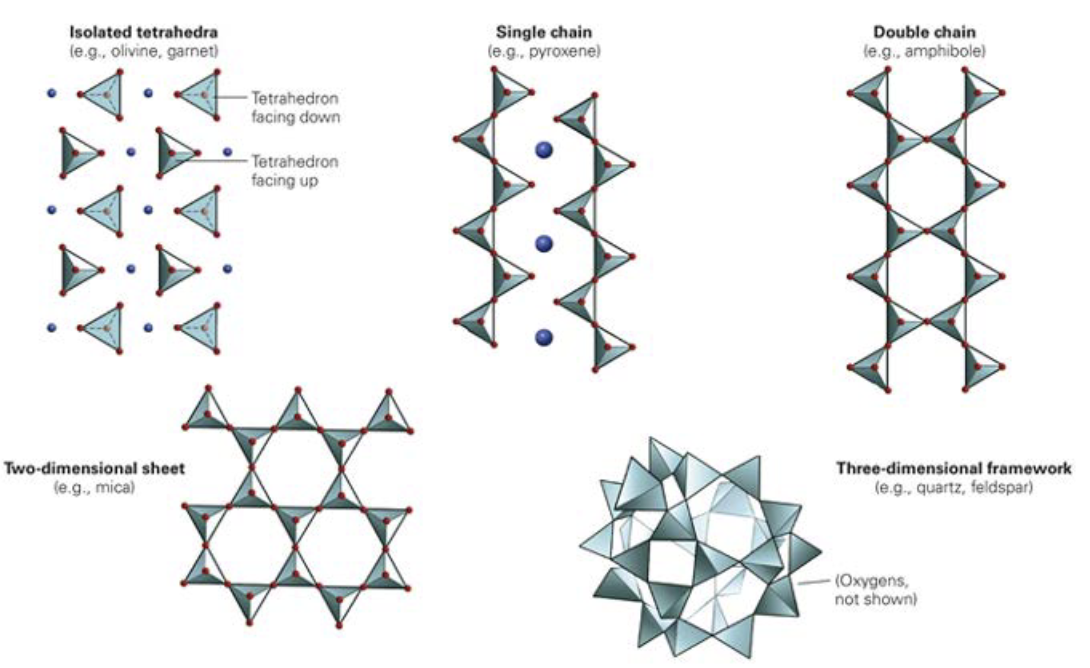UCSB Earth 2 Midterm L 4-6
1/21
There's no tags or description
Looks like no tags are added yet.
Name | Mastery | Learn | Test | Matching | Spaced |
|---|
No study sessions yet.
22 Terms
Mid-ocean ridges
submarine mountain ranges whose peaks lie only about 2–2.5 km below sea leveland are formed by tectonic plate spreading, creating new oceanic crust. They are key features of seafloor spreading where magma rises from the mantle to create new crust.
- divergent plate boundary
How does oceanic crust form?
At a divergent plate boundary where tectonic plates move apart, allowing magma to rise and solidify, forming new oceanic crust.
Continental rifting
- Where continents are getting pulled apart
Steps:
1)Incipient rifting: area of broad uplift; parallel cracks form in the continental crust
Ex: the Basin and Range
2)Rift valley forms: center block of continental crust drops down.
Ex: East African Rift Valley; Lake Baikal
3)Oceanic crust and ocean forms
Ex: Red Sea
4)Spreading continues, mid ocean ridge forms; sides of continent are thinned by erosion, cooled, contracted, and sink before the sea.
divergent plate boundary
E: Today’s Atlantic Ocean
General features of subduction zones
- Down-going slab
- Trenches
- Accretionary prisms (deformed wedge of sediments along subduction zone)
- Volcanism
oceanic-oceanic subduction zones
a tectonic setting where one oceanic plate is forced beneath another oceanic plate, typically resulting in the formation of deep ocean trenches and volcanic island arcs.
-convergent plate boundary
Ex: Marianas Trench
oceanic-continental subduction zones
a tectonic setting where an oceanic plate is forced beneath a continental plate, leading to the formation of mountain ranges, volcanoes, and trenches.
*Oceanic plates are always subducted at ocean-continent convergent boundaries
-convergent plate boundary
Ex: Mt. Saint Helen
Leading factors of volcanism and earthquakes in subduction zones
The interaction of the descending oceanic plate with the overriding plate creates intense pressure and friction, leading to melting of the mantle and generation of magma, as well as the release of seismic energy.
continental-continental collisions
occur when two continental plates collide, resulting in mountain building and seismic activity, without subduction because both plates are of similar density.
- evolve from continental-oceanic collision
- lead to very thick crust
- generate large mountain ranges
- convergent plate boundary
Ex: Himalayas
Age of continental vs. oceanic crust & reason for the difference
Continental: up to 4.0 Ga
Oceanic: <200 Ma
Continental crust is less subjected to subduction and erosion over geological time, while oceanic crust is continually created and destroyed at mid-ocean ridges and subduction zones, resulting in its younger age.
continental transform faults
are plate boundaries where two tectonic plates slide past each other horizontally, causing earthquakes without significant volcanic activity.
Ex: San Andreas Fault
The California plate boundary — San Andreas Fault
is a transform fault that forms the boundary between the Pacific Plate and the North American Plate, known for its significant seismic activity.
fault system consists of a number of transform faults; the San Andreas is the main one.
Oceanic transform faults
are a type of transform fault located on the ocean floor where two oceanic plates slide past each other, often creating fracture zones and causing seismic activity, but with little to no volcanic activity.
Ex: Hawaii
Hot Spots
They are intraplate volcanoes
Thought to be formed by rising plumes of hot mantle rock that originated at the core-mantle boundary. Because the plate moves over top of these plumes, they form chains of volcanoes.
- often tracked back to flood basalt events
Ex: Hawaiian, Yellowstone, Iceland hot spot
Mantle Plumes & where they come from
result from subducted ocean crust accumulated over Earth’s history. LLSVPs act as thermal insulators, making core heating effective at their edges for mantle plumes
Rock vs. Minerals
rock: coherent naturally occurring solid, consisting of an aggregate of minerals or a mass of glass
mineral: naturally occurring solid
What is glass?
A solid in which atoms are not arranged in an orderly pattern; it is usually formed by rapid cooling of molten materials and lacks a definitive crystalline structure.
Polymorphs
Different minerals with same
Different minerals with the same composition
Crystal growth, habits
crystals grow as atoms attach to mineral surfaces, starts from a central seed crystal, and expands outwards as atoms accumulate to form a larger crystalline structure.
Shape of a euhedral crystal/the shape the crystal "wants" to be in
Common mineral properties used for identification
1) hardness
2)color
3)fracture & cleavage
4)crystal habit
5)reactivity
6)density
Mineral classes

Types of silicate minerals & examples of each

euhedral vs. anhedral
1: Good crystal faces, not constrained during growth, so they take on their natural habit
Ex: crystals in a geode
2: Poor crystal faces, crystals initially grow on all faces, but if constrained, they will take on different shapes, lack well-shaped faces